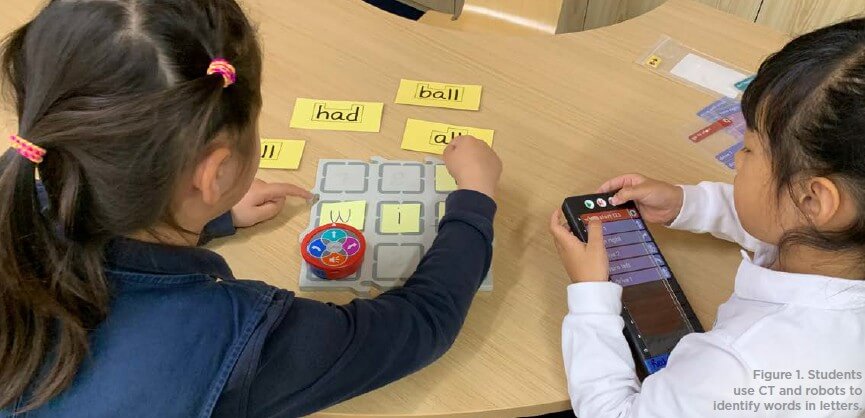STEM Sparks July 2025

Early Childhood Robotics: Igniting Innovation and Computational Thinking
Robotics programming has long been acknowledged for its effectiveness in inspiring and developing students’ computational thinking (CT) fluency, an essential 21st century skill gaining recognition across K-12 education (Alimisis 2013; Eguchi 2015; Grover & Pea 2013). Due to today’s digital demands, teachers must prepare children for the future by teaching CT from an early age; researchers and teachers alike are exploring how digital natives navigate their environment (Roussou, 2022).
The Role of Robotics in Early STEM Education
Robotics has long been used to introduce CT and STEM knowledge to children in early education settings (Gerosa et al., 2022; Roussou, 2022), providing motivating hands-on experiences in an approachable form while learning these subjects (Roussou, 2022). For young learners in particular, robots provide concrete representation of abstract ideas while aiding programming transition by offering relatable hands-on experiences that facilitate engagement during lessons (Roussou, 2022).
Other techniques, like game-based learning or unplugged activities may also foster CT efficiently; yet robotics offers children a special chance to interact with technology directly, build problem-solving abilities that become ever more relevant over time, and experience its unique opportunity. Even more, robotics provides learners with exposure to the technology they will come across throughout life—as more robotic devices enter our everyday lives and become ubiquitous to the early childhood classrooms.
Integrated robots create fun yet stimulating learning environments that foster critical-thinking as well as collaboration skills. Early STEM education’s success relies on creative, experienced educators who understand its significance for children’s early development, providing their pupils with the best learning experiences possible. CT and problem-solving training play an integral part in providing children with skills needed for future challenges they will likely encounter, making CT introduction and promotion necessary to ensure children become future-ready citizens. Before engaging in any activity involving robotics and its integration into other subjects, educators must have a fair grasp of all materials, setup, and operation of the robots.
For an introductory activity, the focus was on familiarizing students with movement (forward, turn left, turn right, turn around) and learning basic guidelines. As an introduction these guidelines may include:
• Robots stay on designated tiles.
• Robots do not bump or crash into things.
• When pressing buttons, press them gently.
• Press buttons one at a time.
• When working in groups, one student presses the buttons and partners take turns.
It is advisable that students are given several opportunities to try using the robots and commands to understand how they function. Once rules/guidelines are rehearsed by students, the integration of other subject areas and implementation of a task become the students’ focus.
In our experience, students may be asked to program a robot that follows instructions, which provides an opportunity for storytelling, story creation and logical-thinking skills development.
STEM Teacher Perspective: Integrating Robotics Into the Kinder Curriculum
Language enrichment is an essential aspect of classroom life with many English language learners enrolled. Robotics programs give students ample opportunities to engage in collaborative conversations as they plan and sequence commands to program robots; for instance, when planning the robot’s path using positional language while making plans to identify letters in words. In this way there is an integrated approach of STEM into language acquisition.

